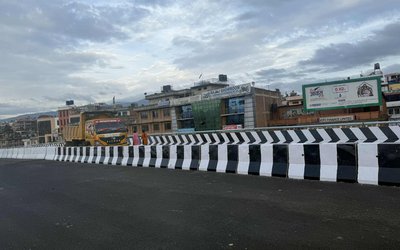More on News






India, Pakistan, Nepal and Bhutan have planned 552 hydropower projects in the Himalayas. Some of these are under construction, some have been completed and still others are on the drawing board. When they are implemented some of them will impact Bangladesh.
The Himalayan mountain range is the centre point from which scores of Asian rivers originate. The Ganges, Brahmaputra and the tributary of Irabarti are the major rivers that also flow through Bangladesh. Our country shares waters of 54 rivers with India and 3 with Myanmar.
If upstream countries divert normal water flow through dams, we will see many of our rivers dry up, our irrigation system destroyed and life killed in our water bodies. If the water flowing through these common rivers is not managed well, it can flood a large part of Bangladesh each year.
India is planning and implementing several projects to dam up our common rivers. The fact is that we are not even taken into confidence about their intentions. We are not privy to the progress made in the projects upstream.
When a dam is built, the river valley is first tampered with and there is a great loss of habitat there. Second, the dam leads to a change in the morphology of the downstream river bed and (in our case) the delta. Our coastline changes too, due to changed sediment load. An important aspect is change in the quality of water downstream. The nutrient load of a river is depleted. Biodiversity, which is unique to a river, then changes as organisms begin to flow in low quantities.
All these changes also lead to changes in climate conditions. Siltation occurs with variation in water table, and aquatic life is disturbed in the lower riparian areas. There is little or no recharge of ground water aquifers and therefore there is a rise in pollution. However, the greatest effect is on the socio-economic environment. Due to less water available downstream, there is little or no employment. People have less drinking water. Production in factories slows down too. The economy can go into a tail spin. Public agitation begins. People start to move to areas where more water is available. Internal migration becomes the norm and the state is forced to rehabilitate masses of people in already crowded areas.
Under these circumstances, Bangladesh needs to craft a trans-boundary water policy, if it does not want to face future political and economic chaos.
http://www.thedailystar.net/newDesign/news-details.php?nid=230380







